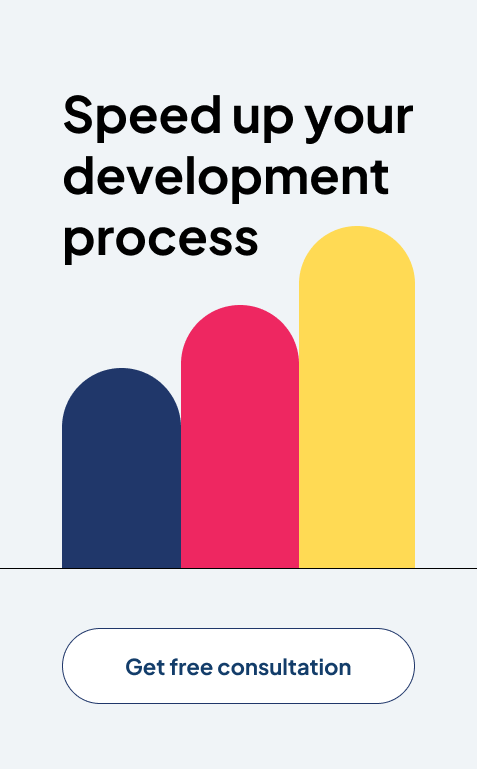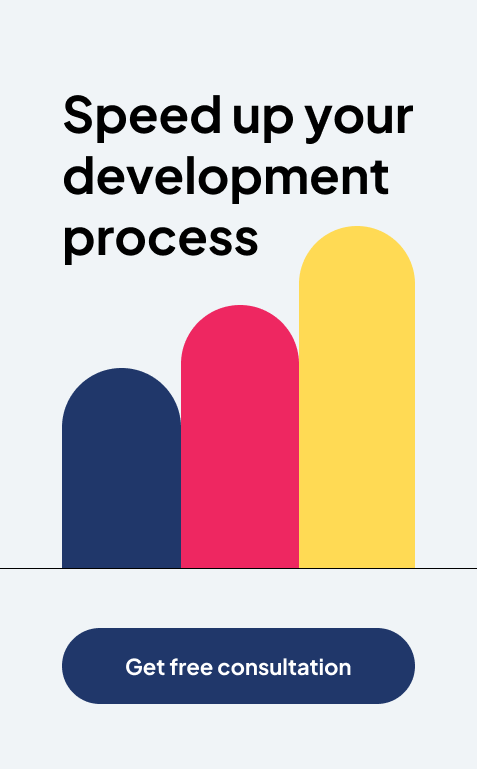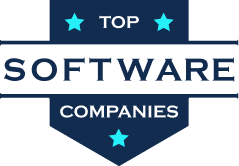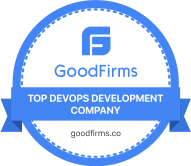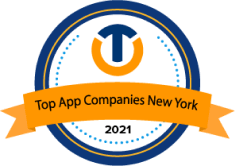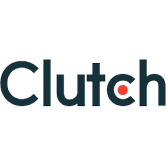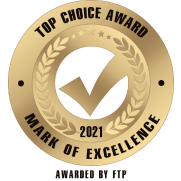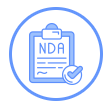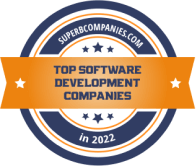Agile vs. Scrum vs. Kanban: Which Methodology is Best for Your Software Project

You likely know the stats. 70% of software projects fail. Over 20% of them drain a startup’s budget. More than 60% of the projects aren’t completed within the timeline.
Why?
For most companies, the answer is that they don’t have good project managers. This isn’t the truth, rather, it’s an off-the-cuff reply. The real reason is that they don’t follow the right project management methodology. Without it, no matter what you do, your projects will likely not succeed.
Agile is an iterative project management approach. It promotes the creation of high-quality products by breaking down projects into smaller parts. Scrum and Kanban are two different Agile project management systems. Both help you build robust products while reducing project inefficiencies.
But how do you choose between Kanban vs. Scrum? Read this blog to find out all about it.
“Companies that are deploying agile at scale have accelerated their innovation by up to 80 percent.”
– Agile Compendium by McKinsey
What Are Agile Methodologies for Software Development?
Agile approaches promote flexibility and pragmatism in software delivery. The iterative approach gives values to the users in small increments. It does not uphold a single big launch. Agile teams constantly assess needs and outcomes. This leads to an efficient implementation of change.
Agile also mandates testing during the development cycle. This lets teams make changes when needed. Testing also allows them to alert each other to potential issues. All of this ultimately leads to the creation and launch of high-quality products.
What Is Scrum?
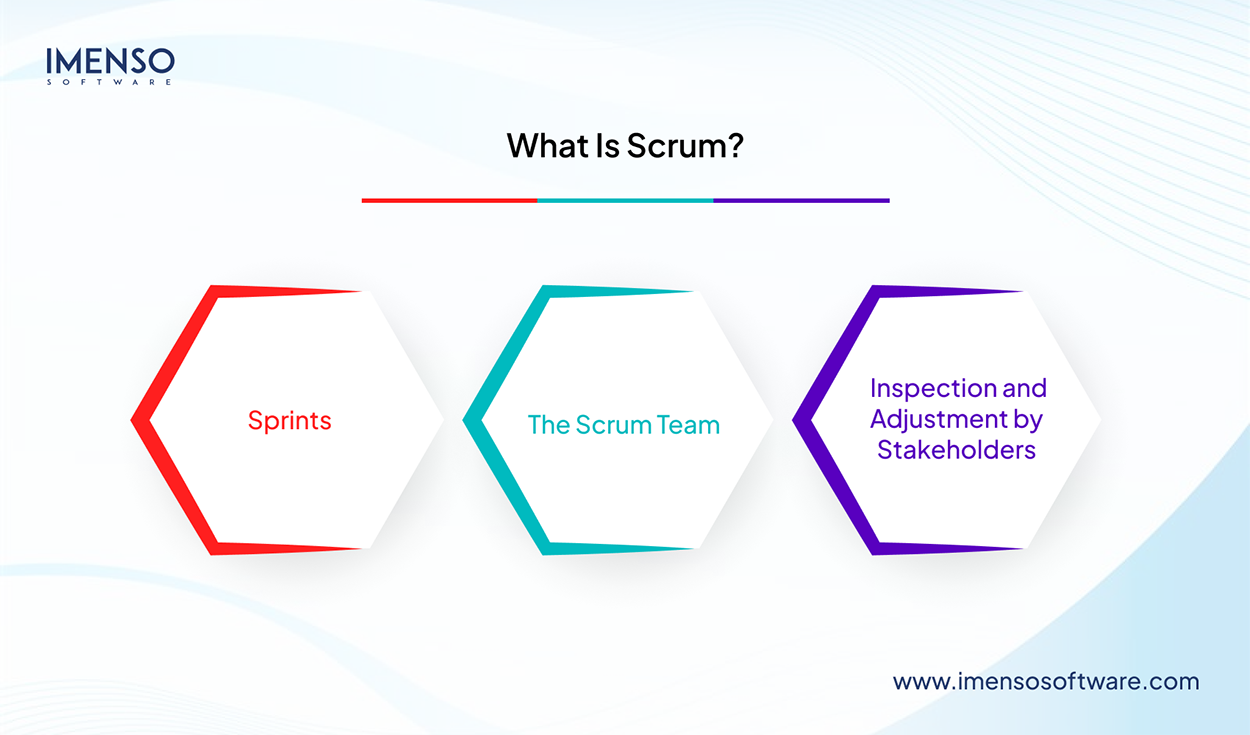
To choose between Kanban versus Scrum, you must know what Scrum is. Scrum is a model for developing complex software. It is a type of Agile method. Teams use it to self-organize tasks. Scrum helps you achieve the larger project goal. It allows you to deliver quality products quickly. At the same time, it ensures that you maintain creativity throughout the development. The iterative method used in Scrum helps you adapt to the changing market conditions.
According to Scrum.org, to succeed with Scrum, you must meet the following conditions:
1. Sprints
Sprints are short cycles of one month or less. Teams deliver increments of valuable work in sprints. Feedback is constant during the sprint. This allows adjustment of the process. It also lets you make better decisions on what you will deliver.
2. The Scrum Team
Software development using Scrum requires a Scrum Team. Each person is responsible for turning the work selection into a value increment during a sprint. A Scrum Team has:
-
A Scrum Master
The Scrum Master oversees the process throughout the sprint.
-
A Product Owner
The product owner carries out the initial planning. They prioritize the task and convey it to the team members.
-
Developers
Developers carry out the tasks during a sprint.
3. Inspection and Adjustment by Stakeholders
Stakeholders include members of the Scrum Team and the business. It also includes the product users or the customers. These examine the sprint results. Upon their review, they adjust for the next sprint to provide the most value.
“At its root, Scrum is based on a simple idea: whenever you start a project, why not regularly check in, see if what you’re doing is heading in the right direction, and if it’s actually what people want? And question whether there are any ways to improve how you’re doing what you’re doing, any ways of doing it better and faster, and what might be keeping you from doing that.”
― Jeff Sutherland, co-founder of Scrum, in his book Scrum: The Art of Doing Twice the Work in Half the Time
Benefits of the Scrum Approach
Scrum is the most trusted approach in the software sector. Knowing its benefits will help you decide between Scrum versus Kanban.
Easily Scalable
Scrum workflows are iterative. They occur during specific work periods. So, the team can focus on specific functionalities for every period. This lets you accomplish the product goals in line with your users’ needs. You can also scale the modules in terms of design, scope, and features.
Compliance with Client Expectations
In Scrum, the client conveys their expectations at the start. They indicate the value that each requirement brings. The Scrum Team reviews them. Then, the Product Owner establishes its priority. In the sprint demos, the Product Owner confirms if they have been met. Then, they provide feedback to the team.
Highly Adaptable
Scrum’s iterative nature allows for quick reaction to changes in customer needs. It lets the team swiftly adapt to changing needs. This prevents the project from falling apart.
Lesser Time to Market
Every sprint delivers an increment of the product. This increment or the sprint’s result is shippable. It means that it is ready for release. So, the client can begin using the most critical product features even before it is fully ready.
High-Quality Products
Regular sprints and aggressive testing lead to the development of high-quality products.
Limitations of Scrum
Scrum is an efficient approach to software development. Still, it has a few cons.
- There is no definite end date in Scrum. This often leads to scope creep.
- Adopting the framework in big teams isn’t easy.
- Daily pre-defined meetings sometimes frustrate team members.
- Quality is hard to implement in the absence of an aggressive testing process.
Agile vs. Scrum
Let’s go back to our initial predicament. Agile or Scrum? The critical differences between them will help you decide better.
Agile
- Agile is more of an ideology. It isn’t right to label it an approach. It focuses on things like flexibility, collaboration, and response to changes.
- Agile is a broader approach that includes various frameworks. Scrum is one of them. Agile is a set of guiding principles for software development.
- Agile is not tied to a specific set of practices. You can customize it based on your project needs.
- Agile promotes iterative and incremental development. Teams work on small parts of a project in cycles. This promotes ongoing feedback and adjustment.
- Agile is highly customer-centric. It focuses on customer collaboration and quick adaptation based on the changing customer needs.
Scrum
- Scrum is a framework under the Agile umbrella. It consists of defined practices for organizing work.
- Scrum has unique roles like Product Owner, Scrum Master, and Development Team. It also has specific artifacts like the Product Backlog and Sprint Backlog. These give a defined structure to project management.
- Scrum divides the project into increments of value called Sprints. Sprints stretch for 2-4 weeks. They promote adherence to the project goals and regular progress review.
- Many other sectors besides software use Agile’s principles. Scrum is mostly effective only for software development. Here, too, it gives the best results for small and medium-term projects and teams.
When to Use Scrum?
To choose between Agile vs. Scrum vs. Kanban, you must know the suitable use cases of Scrum. Below are the situations where Scrum will be the right choice.
- The projects require an organized breakdown into manageable iterations.
- Teams perform tasks with fixed timeframes.
- Ongoing feedback from stakeholders and continuous improvements are crucial.
- The projects can change in scope over time.
- Your team wants a structured framework with clearly set roles and ceremonies.
- The working setup requires transparency and visibility into project progress. In Scrum, this occurs through artifacts such as the Product Backlog and Sprint Backlog.
What Is Kanban?
Kanban is another approach under the Agile methodology. In it, the entire project is visualized on Kanban boards. This improves project transparency. It also promotes team collaboration.
When deciding between Kanban vs. Agile or Scrum, you must know how Kanban differs from the others. The approach focuses on offering small but purposeful changes in the existing setup. That’s why it’s used more in businesses where roles and hierarchy are critical.
Kanban aims at ongoing improvement. It focuses on flexibility in managing tasks and better workflows. It was earlier used in manufacturing to control inventory in the supply chain. It did this with the just-in-time manufacturing practice. In software development, Kanban uses the same concept. It does this by ensuring that the level of required work is the same as the team’s work abilities.
How Does Kanban Work?
The Kanban board lies at the core of this approach. It’s a tool that visualizes the project to monitor its flow. The graphical approach of the board allows anyone to learn what’s happening currently related to the project. A Kanban board consists of:
- Current tasks (indicated by the Doing column on the board)
- Future tasks (indicated by the To-do column on the board)
- Completed tasks (indicated by the Done column on the board)
The team pulls the tasks from the To-do column to the Done column. Kanban measures the completion of one work cycle through the Work in Progress (WIP) principle. Limiting WIP to maintain consistent standards is a core feature that governs Kanban in Agile. For the teams, the most critical job is to complete the current tasks in the stipulated order.
“Choose to use Kanban as a method to drive change in your organization, you are subscribing to the view that it is better to optimize what already exists, because that is easier and faster and will meet with less resistance than running a managed, engineered, named-change initiative. Introducing a radical change is harder than incrementally improving an existing one.”
― David J. Anderson, in Kanban: Successful Evolutionary Change for Your Technology Business
Benefits of the Kanban Approach
Kanban boards are popular in many tech startups. Below are the key advantages of this approach. To decide between Scrum vs Agile vs Kanban, it’s critical to know how it benefits you.
Helps Visualize Workflows
Kanban boards let you see what stage each task is in. You can quickly track progress in real-time. Cloud-based Kanban systems let you connect to related card items. So, you can see how what you do affects higher-level initiatives. This lets you spot obstacles timely manner.
Enhances Transparency and Reduces Employee Overwork
The visual workflow through the Kanban board improves transparency into the project team’s workload. The team leader and the team members can see who is doing what at a specific time. It increases accountability. It also ensures that no task goes unnoticed.
The transparency into tasks makes each member’s workload visible to the other. It encourages team leaders to divide tasks evenly among everyone so no one is overloaded.
Improves Team Collaboration
Kanban is perfect for those wanting to improve team collaboration and break down silos. The Kanban board gives a clear view of what everyone is doing. It lets them give feedback and share their ideas. This leads to better collaboration and teamwork.
Can Be Used With Other Approaches
Kanban boards are versatile. You can combine them with other approaches based on your project’s needs. Commonly, teams combine Kanban with Agile and Extreme Programming (XP). Combining Kanban with other approaches supercharges project management. It lets project managers customize tasks and roles according to their distinct processes.
Limitations of Kanban
Like Scrum, Kanban has some cons, too. These are:
- Kanban does not have a prescriptive structure. This can confuse team members.
- Kanban focuses on project flow. It makes it difficult to predict the completion of a work item accurately.
- Kanban’s implementation gives the best results only if there’s strong team discipline and self-regulation.
- Unlike other approaches, Kanban offers less guidance for specific processes.
When to Use Kanban?
Kanban is the best choice in the following situations:
- When speed to market is the most critical factor.
- If your team is deeply familiar with Agile development and how to deliver value consistently, Kanban can help them improve further with low-code.
- If you have a highly flexible and responsive team.
- When it’s not realistic to build products in fixed-length sprints.
Scrum Board Vs Kanban Board: How Do They Differ?

A comparison of Kanban vs. Scrum isn’t complete until we learn how the boards in both differ from each other. These differences greatly affect your team’s productivity.
1. Managing Task Limits
Scrum boards let teams take only a specific amount of work in a definite period. Every sprint focuses on only a few tasks. But in a single sprint, there is no definite number of tasks that the team can finish at once.
In Kanban boards, there are limits on how many tasks you can do. The number of tasks is present in the In Progress column. This makes it easy to adjust tasks if there are too many in progress.
2. Board Ownership
The Scrum board owner is the Scrum team. The Scrum Master assists with the work. It leads to focused work. A Kanban board isn’t owned by any team. It’s a tool that the team uses to manage workflow and adjust to the changing needs.
3. Changes to the Board
The Product Owner in Scrum cannot modify the board in any manner. This permission rests with the Scrum team. In Kanban, the Product Owner can change the board based on the project’s requirements.
4. Ownership of Task
Another area where a Kanban versus Scrum board comparison can be done is task ownership. In Scrum, the onus for every task is on the entire team. In Kanban, each member has their own task.
The Scrum division of tasks leads to better collaboration. Kanban’s task division allows a member who has finished their task to assist others.
5. Addition of New Tasks
On a Scrum board, no one can add new items till a sprint is completed. On the other hand, on a Kanban board, a task completes when its status changes to Complete. The person who finished this task is free to take up something else.
6. Handling of Unexpected Issues
Another area of comparison between Kanban vs. Scrum boards is the occurrence of unexpected issues. Scrum teams often do not face such concerns. This is because there’s a lot of prior planning. Scrum teams prioritize tasks based on project needs. The overall setup allows the team to quickly anticipate issues and fix them.
In Kanban boards, one can find the addition of an Urgency section alongside tasks. This happens when the team faces an unexpected urgency. In this case, the team’s priority is resolving these issues. They move to other tasks only when the urgencies are addressed.
7. Approach to Managing Big Tasks
The Scrum team completes every task in the Sprint timeframe. The task’s size does not matter. The team breaks big tasks into small parts. This makes the task fit into the sprint, and the team then completes it.
In a Kanban board, big and small tasks move to the To-Do column regardless of size. If someone is working on a big task, the team manages their other work accordingly. This allows for the timely wrap-up of the big tasks.
8. Prioritizing Tasks
Task prioritization plays a critical role in a Scrum board. The team’s main duty is to review the backlog. They focus on the most crucial things and prioritize them in their sprint.
Teams using a Kanban board do not prioritize tasks with as much urgency. They use probabilistic estimation to plan their work. Their focus is on making changes in real-time as the needs change.
9. Measuring Task Progress
When it comes to measuring progress, comparing the Scrum board vs. the Kanban board reveals many variations. A Scrum board consists of many metrics. A few are lead time, sprint goal success rate, team satisfaction, and more. These allow teams to quickly measure progress visually.
Kanban boards focus on visualization. To measure tasks’ progress, they have visual formats like a cumulative flow diagram and control charts. This lets them manage their tasks and visualize what needs to be done.
10. Task Completion
Scrum teams focus on completing every task in a sprint. If somehow a task isn’t done, the sprint becomes unsuccessful. The team clears the Scrum board of all tasks when a sprint finishes.
Kanban boards function constantly. It means that teams constantly add new tasks as they arrive. They update the board in real-time, making adjustments as needed.
Choosing the Best Agile Framework
Kanban provides great results to teams that would benefit from seeing tasks in a visual format. Scrum, on the contrary, helps teams manage complex projects. Agile is a broad framework that allows teams to adapt to changing project needs. You can choose a method that best suits you after reviewing your project’s priorities. It’s also possible to use all three at once without one approach neutralizing the other. This guide has given you in-depth information about each. Hopefully, you will find yourself better positioned to choose one or more of them and, in the process, enable your team to reach its goals.
Frequently Asked Questions
-
- 1. Which is better, Kanban or Agile?
Agile focuses on adaptive, ongoing processes. It simplifies tasks by breaking them into pieces. Kanban focuses on making processes more efficient. What is better for you entirely depends on your project needs.
-
- 2. When should you use Kanban vs. Scrum?
Kanban is suited for teams that prioritize continuous delivery and need to manage tasks on an ongoing basis. Scrum is a good choice for teams dealing with projects where requirements change constantly. If your team needs to deliver within short, defined periods, Scrum is the right choice.
-
- 3. Is Kanban Agile or Waterfall?
The Kanban method falls under the Agile approach. It does not belong to the Waterfall approach of software development. Waterfall focuses on linear development. Kanban, falling under Agile, focuses on managing continuous workflow.
-
- 4. Is Asana Scrum or Kanban?
One can place Asana for both Scrum and Kanban methods. So, Asana can be said to use an approach called Scrumban. Asana offers visualization features. This leads to proactive task tracking in Kanban and Scrum methods.
Want more information about our services?
Similar Posts

What Is CMS? And Why Your Website Must Have One
You can make a website in 10 minutes now, thanks to modern CMS platforms. And it’s not just a marketing campaign to entice business owners into trying a new tool. Building websites has never been easier. There are a vast number of no-code website builders available on the internet for free. You can create a […]...
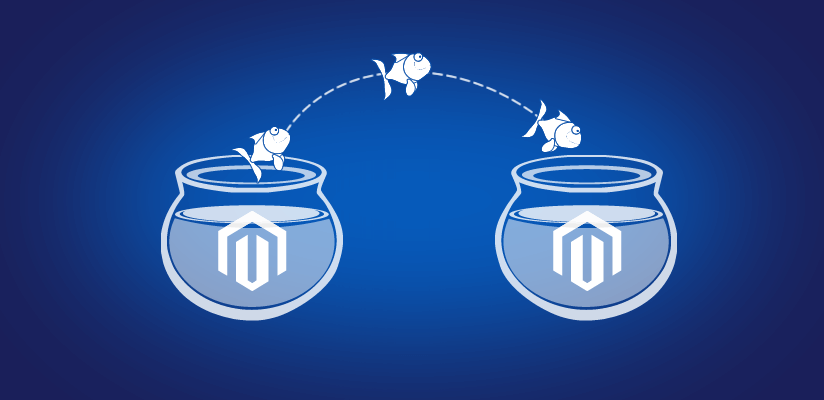
Magento 1 to Magento 2: When is the time to upgrade?
As soon as Magento 2 appeared and became popular, the web became full of buzz concerning the migration from the first version to this latest one. Well, there are too many compelling and lucrative reasons to go for this migration. The Magento 2 with several value additions is all set to make the Magento web […]...

Managing Investor Expectations: Strategies for Founders and CEOs
In the world of entrepreneurship, gaining an investor is often considered the achievement of the ultimate goal. But in reality, it is a mere point of departure of a lengthy and complex competition. A founder or CEO isn’t only the creator of the company; it is also an intermediary between the investor expectations and choice […]...
